By Chukwunyere Helen
THE Igbo people occupy the present day South Eastern part of Nigeria and parts of Rivers and Delta States. Their area is bounded in the south by the Ogoni, Kalabari and Western Ijaw area; in the east by the Ibibio and the Cross Rivers group; in the West by the Edo speaking people; and in the North by the Igala and Idoma.
A basket, according to the lexicon Webster's Encyclopedic Dictionary of the English Language is a vessel (often of wicker or other flexible material) for containing shopping, laundry and wastepaper and so on.
Basketry is the process of weaving un-spun vegetable fibres into a basket. People in the profession of weaving baskets are basket makers.
Basketry is usually considered to be the oldest of all the craft as we know them today and one of the most fascinating aspects of this craft is that with each generation it has been easily adapted to fit in with man's everyday life. The versatility of basketry is a never ceasing wonder and articles from cradles to carriages, hats to houses, boats to balloon basket, fashion accessories to furniture have been woven with a variety of materials throughout the ages.
The tools and equipment needed for basketry are very inexpensive and quite light and portable. The materials are also very cheap and many can be gathered free.
According to Catherine Erdly, the oldest known baskets are (according to radiocarbon dating) between 10,000 and 12,000 years old; earlier than any established dates for archaeological finds of pottery and were discovered in Fauyin in upper Egypt. Other baskets have been discovered in the Middle East that are up to 7,000 years old. However, baskets seldom survive, as they are made from perishable materials. The most common evidence of knowledge of basketry is an imprint of the weave on fragments of clay pots, formed backing clay on the walls of the basket and firing.
It is difficult however, to trace the origin of basketry in Igbo land but suffice it to say that it is as old as the history of man.
Traditional Basketry in Igbo land is learnt through Ascription or by Apprenticeship. Some families are known for their flair in basketry. Children learnt the art because they grew up in the system. However, there are people who are into basketry as a means of livelihood. In this case, a boy was sent to learn the art of contemporary and more aesthetic way of basket making. He was also taught the use of the tools in basketry that may not necessarily be found in his home. These tools differentiate baskets meant for sale by a professional from those made merely for home use.
The objective of this work is to give a general overview of basketry in Igboland and also to highlight the fact that baskets are part of material culture, it serves as a social and cultural document which is used to interpret values, beliefs and attitude embodied in the material aspects for people's life.
There are varieties of baskets and each has a specific use. All baskets are generally called 'Ekete'. Dialectically they are called 'Ikata' in Abia, Ebonyi and Enugu States, and 'Ide' in Umuahia. They come in various shapes; the round type, the falt oval shaped type also known as 'ngara' the rectangular type called Avo etc.
The tools and equipments needed for traditional basketry are very inexpensive and quite light and portable. The materials are also very cheap and many can be gathered free. However for proper understanding, traditional basketry has been classified into four types with materials used solely for such classifications: they include, 'Coiled' basketry using grasses
Plaiting basketry Using materials that are wide and
ribbon-like, such as palms.
Twinning basketry Using materials from roots and tree bark. Twinning actually refers to a technique where two or more flexible weaving elements (weavers) cross each other as they weave through the stiffer radial spokes.
Willow also known as 'Igu nkwu' or emere and the cane, 'apipia' or 'ana' are got from palm fronds of the palm tree, palm kernel tree or the coconut tree. The palm frond is preferable because it is strong and flexible. Even when it is dry, it still retains its elasticity.
In basketry, the stakes and wearers are utilized stakes usually form the bottom of the basket and become the vertical framework for the basket sides. Round baskets have spokes, other shapes have stakes. The weavers fill in the sides of the basket.
The parts of basket are the base, the side walls and the rim. A basket may also have a lid, handle or embellishment depending on its usage.
Some of the instruments used in basketry include cutters, round nosed pliers, drills - 'agha', hammer -nkuni' tape -'ntu', saw and knife -'mma'.
Basketry generally has techniques which a maker adopts to give the desired production. There are two main techniques in basket making. They include weaves and Borders.
Weaves are methods of filling in the spaces between the stakes (the upright or ribs
of the basket).
These are three basic weaves. They include
Rending, pairing and wailing.
Rending:-This is the weave for economy and speed. It is very easy and needs only one weaver (length of cane). It is started by putting the cane in any space between two stakes, then weave to the right in front of one stake and behind the next, and so on, all the way round. This is used mostly for the flat or round basket. The material called ahiamara is used to make the flat basket.
One must take care with the shaping. Every time a weaver gives round the front of the stake, hold that stake with the thumb and forefinger of the left hand. The shape you want will not happen on its own - you must put it there.
Pairing:- The weaver used mainly for base weaving or for decoration on the sides. This time, there are two weavers. Bend a piece of cane round one of the stakes so that those are now two weavers coming to the front. Then the one on the left hand is taken in front of one stake, over the top of the other weave and round the back of the next stake. This art is repeated with the other cane which is now the one on the right.
Wailing:- This is the weaver used when strength is required. It is rarely always put on at the top and bottom and often in the centre as well.
The second technique in basketry is Border. It is the finishing around the edge or handle of the basket.
All baskets follow the same process except for those that have wooden bases like the rectangular type for carrying hearing things called 'Avo'. There are no laid-down rules on the number of days that a basket can be produced. Nonetheless, the avo takes longer because the wood for the base has to be prepared before use.
The wood used for the base of the avo is usually light. For example the wood from the rubber tree the 'apu' tree or the ebele anu tree, because it is light and cannot be easily attacked by insects.
To make the avo, you cut the wood into a rectangular shape based on the size of the avo you want. Then you scrape and smoothen the base (top and bottom). Then you create holes by drilling into the edges of the wood. You also make smaller holes at the sides of the wood. Then you put the canes you had already prepared to form the columns, which is held firmly with a twine (akwara). Then you put the smaller sticks in the holes you have made at the sides of the wood. The height of the cane, or ana depends on the height you want to achieve with the avo.
At this stage, your avo is half-way done. You choose the weaving technique you wish to adopt. This can take a couple of days because its durability depends on now careful one is.
Certain baskets are decorated or embellished with local dyes such as uhe, odo, akwukwo ohia etc for effect as works of art or as ornamentation.
The use and importance of basketry is as old as the history of man. Their usefulness cannot be over-emphasized. Different shapes and sizes of baskets are used both at home and in the farm. They are;
House-hold utensils
As a house-hold utensil, the basket can serve many purposes.
_ It can be used as a storage or preservation - fish, kolanut, fresh okra, tomatoes, oil bean (ugba)
_ As a sieve for garri processing, cassava processing etc.
_ For washing melon seed, bread fruit.
_ For fermenting tapioka
_ As a dryer - the ngara basket is used to dry vegetables
_ For ornamentation: it is used as a jewelry case
_ As furniture - chairs, carriages, beds, cots, wardrobe etc
_ As receptacle for tomatoes, pepper, fruits etc.
Economic importance
Baskets serve as a source of revenue. Basketry is any form is the kind of product every family makes use of. Therefore they are a source of revenue. As patronage increases, so are more hands needed to make the baskets which create employment for people.
As a valuable traditional system of cultural transmission baskets do not only serve as sources of revenue, but are reflections of the craftsmanship of our people over the ages. The purposes is not only to transfer the craftsmanship as a viable economic venture, but also to sustain the tradition that has continued to be transmitted from generation to generation.
Social Importance
They are produced as works of art and lung in the house, hotels, restaurants etc.
_ Those that are embellished with local dyes are used as hampers, sun hats, handbags, bird's cage, baby rattles etc.
_ Used as war shields
_ Used as musical instruments when combined with beads for sound effect. Can also be used as a base for musical instruments like the pot.
_ Used as a base for the palm wine pot.
_ Costume for masquerading
Religious Importance
_ As a shrine object
_ As a divination object
_ For performing sacrifices, which are kept at farms or road paths and junctions.
_ For magic performance whereby wine is poured into an empty basket during festivals and the wine does not pour out of the basket. This is done in parts of Abiriba and Arondizuogu.
Agricultural Importance
_ As a fishing trap
_ For harvesting farm produce - vegetables, yams, cassava.
_ The avo is solely used for big time harvesting for example yam, cassava etc
_ For hunting rodents or small animals.
There are no known taboos associated with the wrong use of baskets. In the past, baskets were kept solely for outside use. They were not kept indoors because of the kind of chores associated with them. Today, with the advent of modernization, such traditions have been overlooked. Baskets are now used indoors for others things as mentioned above other then for the farm.
The avo basket is known as the breadwinner's basket because it is used for carrying yams, which in Igboland is a man's crop. It is not carried on the head by a man, but put on the bicycle seat. Whereas if a woman must carry the 'abo' or 'avo'', she must carry it on her head.
The pre-colonial basketry has survived changes and the test of time. Modernizations have succeeded in giving more depth to traditional basketry. Thus, in addition to the traditional basket making which has continued because of their relevance, more styles and designs have been added and the makers have also widened their range of products and types to include iron type of baskets, rubber type of baskets, baby, rattles, roll baskets, posy baskets, serving baskets, flower baskets etc.
Chukwunyere Helen discussed this topic with the
National Museum Study Group, Port Harcourt recently
Subscribe to:
Post Comments (Atom)

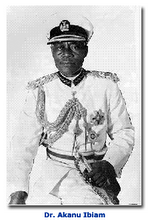
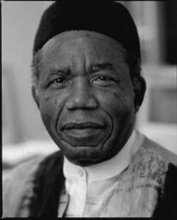

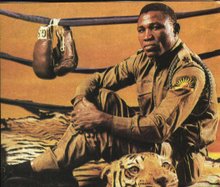
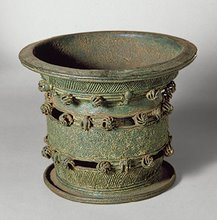
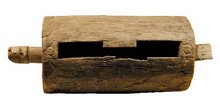
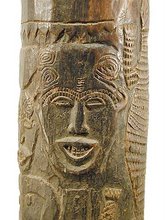
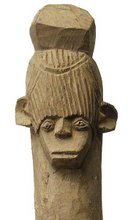
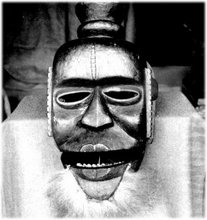

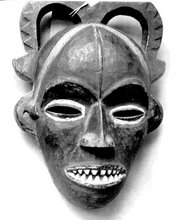
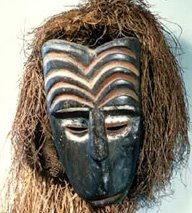
No comments:
Post a Comment